This article has been reviewed according to Science X's editorial process and policies. Editors have highlighted the following attributes while ensuring the content's credibility:
fact-checked
peer-reviewed publication
trusted source
proofread
Less ice in the Arctic ocean has complex effects on marine ecosystems and ocean productivity, study finds
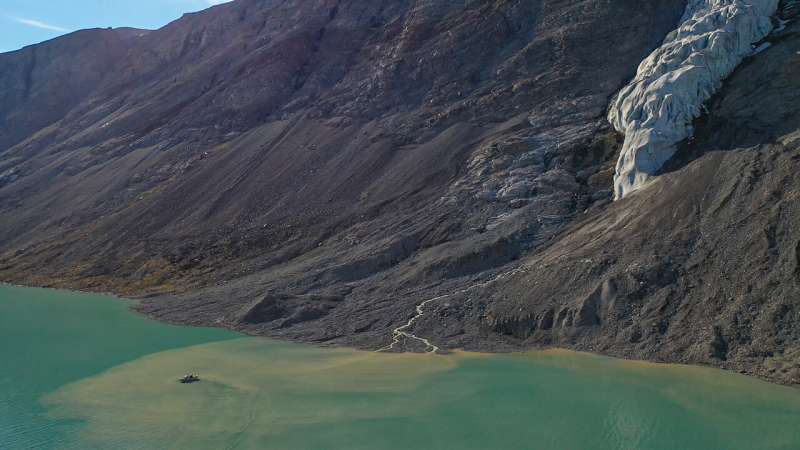
Over the past 25 years, the amount of summer Arctic sea ice has diminished by more than 1 million square kilometers. As a result, vast areas of the Arctic Ocean are now, on average, ice-free in summer. Scientists are closely monitoring how this impacts sunlight availability and marine ecosystems in the far north.
"Many questions arise when such large areas become ice-free and can receive sunlight. A prevailing paradigm suggests that the Arctic Ocean is rapidly becoming more productive as sunlight becomes more abundant in the marine environment. However, it is unclear how ecosystems will evolve in response to increasing sunlight availability and how different components will be affected," says Karl Attard, a marine scientist and Assistant Professor at the Department of Biology, University of Southern Denmark.
Attard has led an international research team investigating sunlight availability and photosynthetic production on the understudied Arctic seafloor. Their study has been published in Proceedings of the National Academy of Sciences.
The research team focused on the vast shelf regions of the Arctic Ocean; portions of the seafloor that are relatively shallow, rarely exceeding 200 meters in depth. These vast regions, accounting for around half of the Arctic Ocean area, make it particularly interesting to study how seafloor ecosystems respond as sea ice continues to diminish.
Sunlight is a crucial energy source for life forms that grow through photosynthesis; they require water, carbon dioxide, nutrients, and sunlight. Scientists refer to these organisms as primary producers, and they thrive within the sea ice, within the water column, and on the seafloor. These organisms serve as the foundation for a broader food web in the ocean, supporting commercially important fisheries and large predators like polar bears. The main primary producers on the seafloor are microalgae, seaweeds, and seagrasses.
"It might seem reasonable to assume that the abundance of primary producers on the seafloor in the shallower regions of the Arctic Ocean would increase as more sunlight reaches the bottom. In fact, our research suggests that since 2003, the seafloor area exposed to sunlight has been increasing rapidly at around 47,000 square kilometers per year. Curiously, however, we do not see an increase in the total amount of sunlight reaching the Arctic seafloor," says Karl Attard, referring to the research team's models based on 20 years of satellite data from the Arctic Ocean.
This surprising result is seemingly due to water transparency, which has decreased in many parts of the Arctic Ocean.
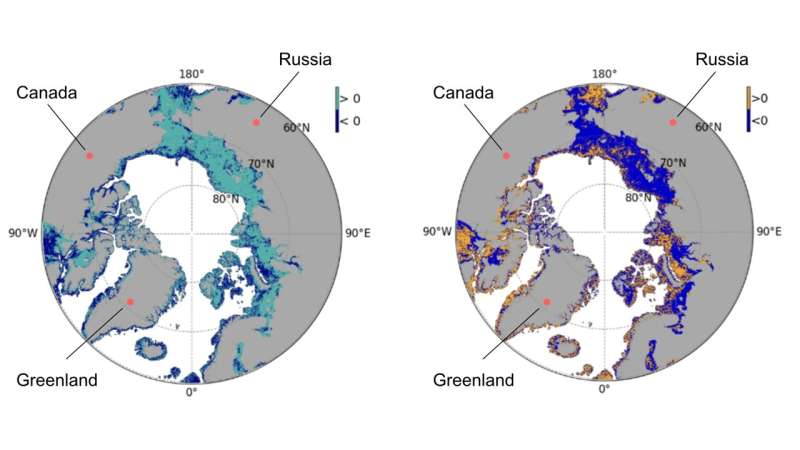
"Sunlight reaching the ice-free ocean is rapidly absorbed by phytoplankton, sediments, and dissolved substances in the water, preventing much of the sun's rays from reaching the seafloor. Our models predict increases in primary production in some regions but not in others, even though all these regions are now ice-free and receive sunlight at the ocean surface," explains Karl Attard.
The explanation for the murky water lies in the fact that the Arctic Ocean is surrounded by land, and some of the world's largest rivers flow into it. With the river water comes numerous particles from the catchment areas through which the rivers pass, and these particles can cloud significant portions of the Arctic Ocean.
These rivers originate as far away as Mongolia or central North America, carrying substantial amounts of particles with them when they flow into the Arctic Ocean. The river water also contains dissolved molecules which color the water and absorb sunlight.
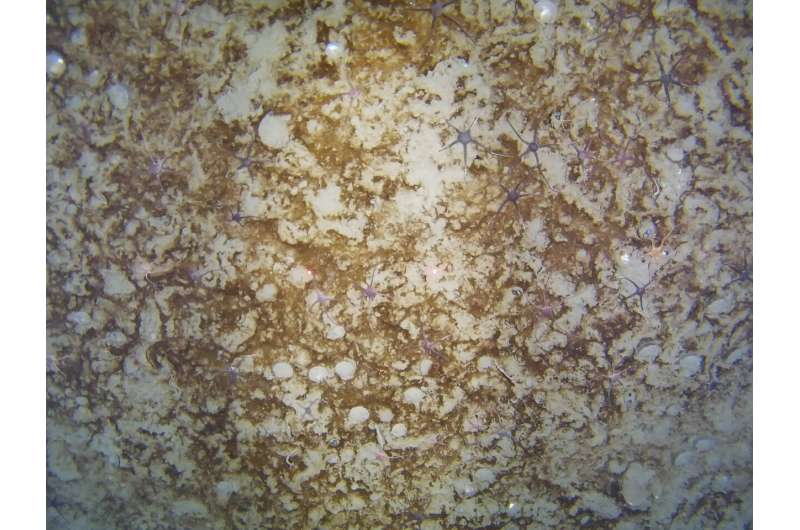
In the researchers' models, there are regional variations in the amount of biomass produced at the bottom of the new ice-free areas. The models indicate an increase in primary production in several places along Greenland and Canada's extensive coastlines. Conversely, there is a decline in primary production on much of the Russian continental shelf.
"The question then arises: why does sunlight availability and primary production increase in some areas while diminishing in others? Unfortunately, our models do not provide a clear answer as to what specifically is driving this change, and obtaining this information necessitates investigating individual regions and validating our models with more observational data," says Karl Attard.
"The latest models suggest that seaweeds and eelgrass will establish themselves on the shallow coastal seafloor and will expand into the Arctic Ocean as the ice further diminishes and water temperature increases. Here too, more observations are needed to test the uncertainties in the model."
Traditionally, eelgrass and seaweeds struggle in ice-filled waters because the ice reduces sunlight availability and grinds and damages their tissues. However, in increasingly ice-free waters, extensive fields of underwater vegetation may emerge, serving as habitats for fish fry and other organisms.
-
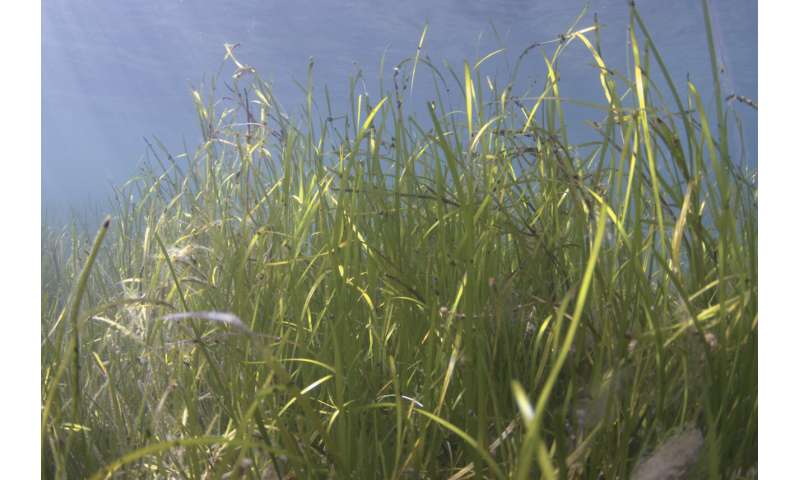
Arctic Ocean seagrass meadows. Credit: Peter Bondo Christensen -
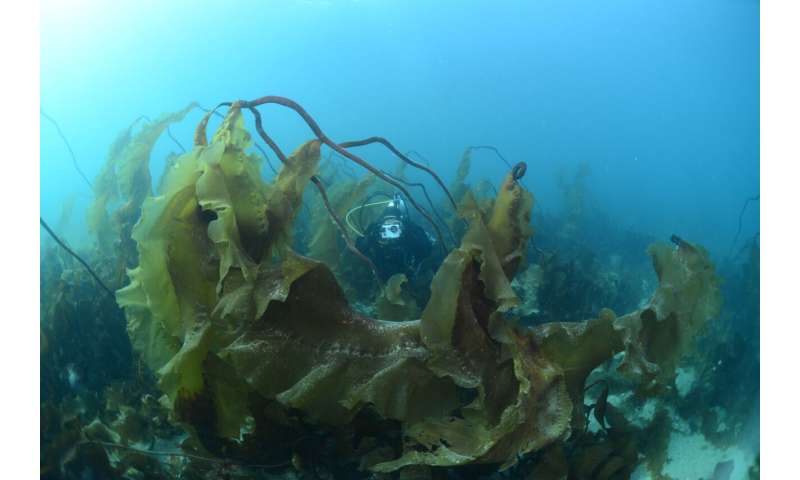
Arctic Ocean seaweed forest. Credit: Ignacio Garrido
The primary production calculated by the researchers for the Arctic Ocean seafloor is only a part of the total marine primary production, which also occurs in the water column and within sea ice.
"We have for the first time estimated seafloor primary production by microalgae, eelgrass, and seaweeds, and it is significant. We estimate that it is four times larger than the production in sea ice, which has received greater attention and is better represented within our understanding of Arctic ecosystems. Including all components of marine primary production is crucial for understanding what is happening within Arctic Ocean ecosystems," says Karl Attard.
The Arctic Ocean has been undergoing rapid environmental change over the past decades, and he expects these transformations to continue.
"Our study suggests that the impacts of climate change on sunlight availability and primary production in the Arctic Ocean are complex. Additionally, as the Arctic Ocean continues to warm, we may witness more species migrating from lower latitudes, potentially leading to a more productive marine environment than what exists today—at the cost of losing what is special for the Arctic," he says.
More information: Attard, Karl, Seafloor primary production in a changing Arctic Ocean, Proceedings of the National Academy of Sciences (2024). DOI: 10.1073/pnas.2303366121. doi.org/10.1073/pnas.2303366121
Journal information: Proceedings of the National Academy of Sciences
Provided by University of Southern Denmark




















